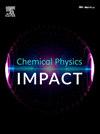Morphology-controlled nickel oxide nanostructures: unlocking high-performance supercapacitor applications
IF 4.3
Q2 CHEMISTRY, PHYSICAL
引用次数: 0
Abstract
Nickel oxide (NiO) has garnered significant attention as a high-performance electrode material for energy storage devices due to its excellent electrochemical activity and high theoretical capacity. In this study, well crystalline cubic structure NiO with diverse morphologies-three-dimensional spherical (NiO-3D-S), two-dimensional sheet-like structure (NiO-2D), and three-dimensional asymmetric structure (NiO-3D-A) were synthesized via a simple hydrothermal method. The surface morphology was effectively tailored using polyvinylpyrrolidone (PVP) in combination with various surfactants, including ethylene glycol (EG), cetyltrimethylammonium bromide (CTAB), and glycerol. Among the synthesized structures, the 2D sheet-like porous NiO (NiO-2D) exhibited superior electrochemical performance, achieving a high specific capacitance of 853.17 F g⁻¹ at a current density of 1 mA g⁻¹. It also demonstrated excellent cycling stability, retaining approximately 92 % of its initial capacitance after 3000 charge–discharge cycles. This enhanced performance is attributed to its unique porous architecture composed of ultra-fine grains self-assembled into uniform 2D sheets, which facilitate rapid ion diffusion and efficient charge transport. To evaluate practical applicability, an asymmetric two-electrode device was fabricated using NiO-2D as the positive electrode. The device delivered an energy density of 3.2 Wh kg⁻¹ and a power density of 360 W kg⁻¹, and successfully powered a red light-emitting diode (LED), demonstrating its potential for real-world applications. These findings underscore the promise of 2D sheet-like porous NiO as an advanced electrode material for high-performance and durable electrochemical energy storage systems.

形态控制的氧化镍纳米结构:解锁高性能超级电容器的应用
氧化镍(NiO)由于其优异的电化学活性和较高的理论容量,作为一种高性能的储能电极材料受到了广泛的关注。本研究通过简单的水热法合成了具有多种形态的井晶立方结构NiO-三维球形结构(NiO- 3d - s)、二维片状结构(NiO- 2d)和三维非对称结构(NiO- 3d - a)。使用聚乙烯吡咯烷酮(PVP)和各种表面活性剂,包括乙二醇(EG)、十六烷基三甲基溴化铵(CTAB)和甘油,有效地调整了表面形态。在合成的结构中,二维片状多孔NiO (NiO-2D)表现出优异的电化学性能,在电流密度为1 mA g⁻¹时达到853.17 F g⁻¹的高比电容。它还表现出优异的循环稳定性,在3000次充放电循环后保持约92%的初始电容。这种增强的性能归功于其独特的多孔结构,由超细颗粒自组装成均匀的二维薄片,促进了离子的快速扩散和有效的电荷传输。为了评估其实用性,以NiO-2D为正极制备了非对称双电极器件。该装置的能量密度为3.2 Wh kg⁻¹,功率密度为360 W kg⁻¹,并成功地为红色发光二极管(LED)供电,证明了其在现实世界中的应用潜力。这些发现强调了二维片状多孔NiO作为高性能和耐用电化学储能系统的先进电极材料的前景。
本文章由计算机程序翻译,如有差异,请以英文原文为准。
求助全文
约1分钟内获得全文
求助全文
来源期刊

Chemical Physics Impact
Materials Science-Materials Science (miscellaneous)
CiteScore
2.60
自引率
0.00%
发文量
65
审稿时长
46 days
 求助内容:
求助内容: 应助结果提醒方式:
应助结果提醒方式:


